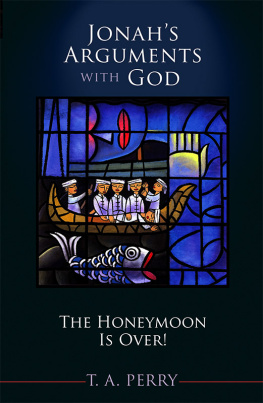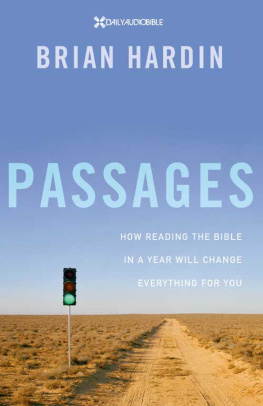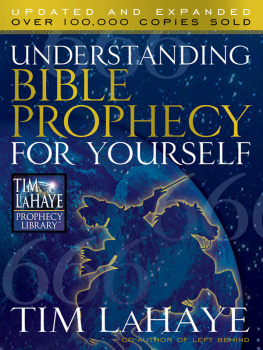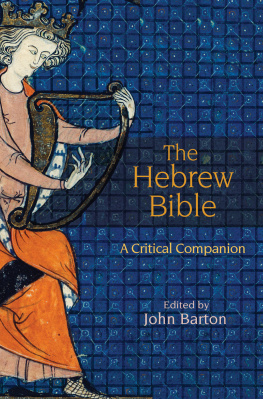Wisdom in the Hebrew Bible: Exploring Gods Twilight Zone (eBook edition)
2008 by Hendrickson Publishers Marketing, LLC
P. O. Box 3473
Peabody, Massachusetts 01961-3473
eBook ISBN 978-1-61970-539-5
All rights reserved. No part of this book may be reproduced or transmitted in any form or by any means, electronic or mechanical, including photocopying, recording, or by any information storage and retrieval system, without permission in writing from the publisher.
Previously published in 2008 as Gods Twilight Zone: Wisdom in the Hebrew Bible.
Scripture quotations marked RSV are taken from the Revised StandardVersion of the Bible, copyright 1952 (2d ed., 1971) by the Division of Christian Education of the National Council of the Churches of Christ in the United States of America. Used by permission. All rights reserved.
Scripture quotations marked NRSV are from the New Revised Standard Version Bible, copyright 1989 by the Division of Christian Education of the National Council of the Churches of Christ in the United States of America. Used by permission. All rights reserved.
Scripture quotations marked NJPS are taken from TANAKH, The Holy Scriptures, copyright 1985, The Jewish Publication Society. Used by permission. All rights reserved.
Due to technical issues, this eBook may not contain all of the images or diagrams in the original print edition of the work. In addition, adapting the print edition to the eBook format may require some other layout and feature changes to be made.
First eBook editionSeptember 2014
Cover Art: The cover artwork entitled Dream of Joseph was produced by He Qi in 2005 using gouache on rice paper. The work depicts Joseph, wearing the colored coat from his father, looking toward the heavens as his jealous brothers watch and plot. Photo Credit: Copyright Dr. He Qi (www.heqigallery.com). Used with permission.
This book is dedicated to my beloved grandchildren Adin and Abigail Bracha.
Grandchildren are the crown of their elders.
Prov 17:6
Preface
This book offers a series of close literary studies, all previously unpublished, on key moments in the Hebrew Bible that deal with wisdom themes and methods. The two are closely connected, since wisdom writers loved to tell their stories and expound their values through methods long familiar both in the Bible and in world literature: proverbs, riddles, mashal-comparisons, and sayings, especially when attached to narratives. Their champions in the Hebrew Bible include Noah, Abraham, Judah and Tamar, Joseph, Solomon, and the often anonymous sages who coined proverbs about King Saul, longed for righteousness, and exalted the importance of life and family values.
Special emphasis is placed on the Bibles very beginnings, on Genesis, where much of wisdoms later message is compacted and previewed, especially in respect to righteousness as the worlds foundation. The ensuing decline of classical prophecy gave new importance to methods already in evidence in Genesis, as Gods message was viewed as increasingly accessed through a twilight zone of ambiguous oracles and signs, dreams, riddles, and an ideology that was seen to spring from the Bibles earliest moments.
At twilight things become blurred, open to multiple interpretations, and there are not one but two twilights to each day, the one going from day to night and the other, the reverse. Taken together, they express the dynamism, the changing fortunes of human existence, perpetually shifting from happiness to misery, ignorance to clarity. Far from being moments of rapid passage, the twilights become the very image of human existence. For the text does not focus on stable entities like night and day, but rather on their perpetual flux and connectedness: And it was evening and it was dawn, two twilights, one single day.
Abbreviations
AB | Anchor Bible |
Abot | Pirkei Abot [Ethics ofthe Fathers] |
AJS | Association for Jewish Studies |
b. | Babylonian Talmud |
BDB | Brown, Francis, S. R. Driver, and C. A. Briggs. A Hebrew and English Lexicon of the Old Testament, withan Appendix Containing the Biblical Aramaic. Oxford: Clarendon, 1906. |
BibInt | Biblical Interpretation |
BSac | Bibliotheca Sacra |
ch(s). | chapter(s) |
FOTL | Forms of the Old Testament Literature |
Gesenius | Gesenius, Wilhelm, E. Kautzsch, and A. E. Cowley. Gesenius Hebrew Grammar. Oxford: Clarendon, 1906. |
HTR | Harvard Theological Review |
HUCA | Hebrew Union College Annual |
ICC | International Critical Commentary |
JBL | Journal of Biblical Literature |
JETS | Journal of the Evangelical Theological Society |
JPS | The Jewish Publication Society |
JSOT | Journal for the Study of the Old Testament |
Midr. | Midrash |
MT | Masoretic Text (the standard Hebrew version) |
n./nn. | note/notes |
NCB | New Century Bible |
NIB | New Interpreters Bible |
NICOT | New International Commentary on the Old Testament |
NJPS | Tanakh: The Holy Scriptures: The New JPS Translation accordingto the Traditional Hebrew Texts |
NRSV | New Revised Standard Version |
OTL | Old Testament Library |
OtSt | Oudtestamentische Studin |
Qohelet / Kohelet | The book of Ecclesiastes |
Rashi | Rabbi Shlomo Yitzhak (11401105). See Torat Hayyim. |
RSV | Revised Standard Version |
SBLDS | Society of Biblical Literature Dissertation Series |
v(v). | verse(s) |
VT | Vetus Testamentum |
VTSup | Supplement to Vetus Testamentum WBC |
ZAW | Zeitschrift fr die alttestamentliche Wissenschaft |
Biblical books are abbreviated according to the guidelines published in the SBL Handbook of Style. All references to the Bible and to classical texts give chapter followed by verse or appropriate sub-division. I cite Hebrew Scripture according to the chapter and verse of the MT and give the English enumeration when different. All biblical and other translations are mine unless otherwise noted.















